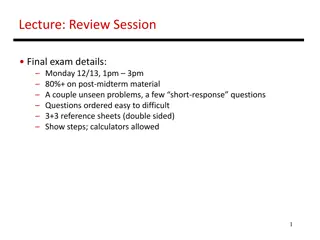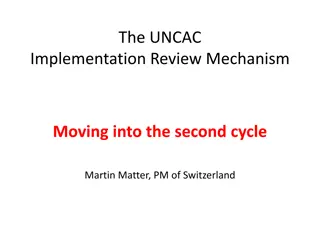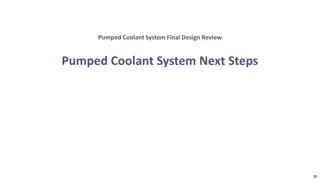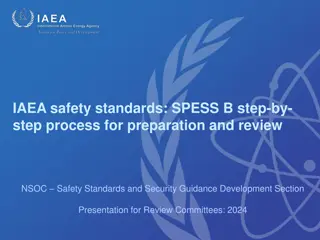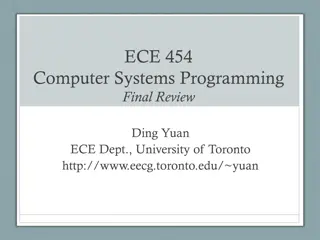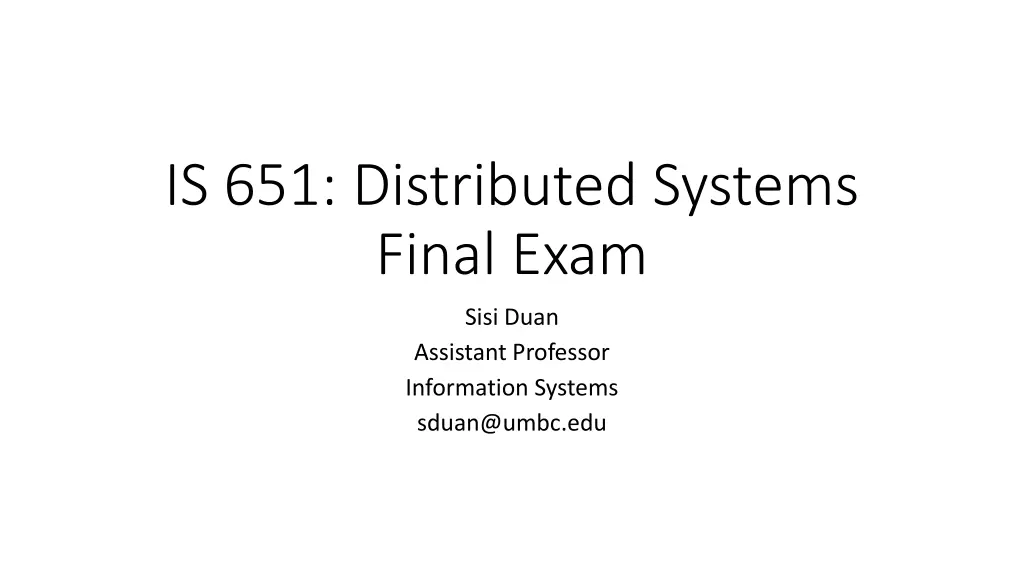
Distributed Systems Final Exam Overview
Explore the details of the IS 651 Distributed Systems Final Exam covering topics such as replication methods, fault tolerance, consensus, and more. Get insights into the exam format, questions, and key discussion points. Prepare effectively for a successful exam experience.
Download Presentation

Please find below an Image/Link to download the presentation.
The content on the website is provided AS IS for your information and personal use only. It may not be sold, licensed, or shared on other websites without obtaining consent from the author. If you encounter any issues during the download, it is possible that the publisher has removed the file from their server.
You are allowed to download the files provided on this website for personal or commercial use, subject to the condition that they are used lawfully. All files are the property of their respective owners.
The content on the website is provided AS IS for your information and personal use only. It may not be sold, licensed, or shared on other websites without obtaining consent from the author.
E N D
Presentation Transcript
IS 651: Distributed Systems Final Exam Sisi Duan Assistant Professor Information Systems sduan@umbc.edu
Final Exam 25% of the score blackboard, 1 hour Covers slides 7(primay-backup)-11(blockchain) Requires LockDown browser (If you haven t used it before, there is one in blackboard called mock exam where you can try) Webcam will be enabled to monitor the response
Final 29 Questions total 13 Multiple choices, 4 pts each 16 True/False questions, 3 pts each Each question has only one correct answer 2 minutes per question. Keep track of your time. Most questions are similar with in-class exercises (Google form questions) and homework questions. You can have some printout/materials in front of you to help you answer the questions. You are not allowed to look up answers online.
What we have discussed so far Primary backup Consensus Paxos BFT Blockchains
Replication for fault tolerance Consistency challenges Failures Concurrency of messages
Replication methods Active replication Passive replication What s the difference? Pros and cons?
Primary Backup replication Passive replication Fewer message exchange (lower network bandwidth) Backups do not have to actively participate Backup failures are easy to handle
Primary Backup Replication Handling primary failure is not easy. Why? Viewstamped replication What s it? Why does it work? time -> Client Primary replies to the client After it gets majority OKs Request Reply p0 (primary) m=<PREPARE,v0,seq=1, request> p1 ok p2 On receiving a PREPARE message m: Reject if its current view id > m.v Reject if its status != NORMAL Append request with the seq to its log
What we have discussed so far Primary backup Consensus Paxos BFT Blockchains
Consensus problem Some nodes propose something All nodes, despite failures, agree on something v v v v v Correctness of consensus Safety Liveness
X = read(A) Y = read (B) Write (A, X-100) Write (B, y+100) Consensus Distributed databases ACID Atomicity (All-or-nothing) Consistency Isolation (Concurrent requests do not interfere) Durability (can tolerate failures) T1: Transfer $100 from A to B T2: Transfer $100 from A to C A D I C T1 fully completes or leaves nothing once T1 commits, T1 s writes are not lost no races, as if T1 happens either before or after T2 preserves invariants, e.g., account balance > 0
Consensus Isolation v.s. performance Serializability X = read(A) Y = Read(B) Write (A, x+100) Write (B, y-100) commit X = read(A) Y = Read(B) Print (x+y) commit A (serial) schedule: R(A),R(B),W(A),W(B),C,R(A),R(B),C Serializable? R(A),R(B), R(A),R(B),C, W(A),W(B),C Serializable? R(A),R(B),C, R(A),R(B), W(A),W(B),C Serializable? R(A),R(B), W(A), R(A),R(B),C, W(B),C
X = read(A) Y = Read(B) Write (A, x-100) Write (B, y+100) commit 2PC 1. Client sends a request to the coordinator 2. Coordinator sends a PREPARE message client 3. A, B replies YES or NO 4. Coordinator sends a COMMIT or ABORT message 1. COMMIT if both say yes 2. ABORT if either says no request Coordinator COMMIT COMMIT A B
3PC 3PC solves the problem of 2PC by splitting COMMIT into PRE- COMMIT and COMMIT But 3PC has network partition problem
What we have discussed so far Primary backup Consensus Paxos BFT Blockchains
Paxos Tolerates crash failures Completely-safe and largely-live agreement protocol Proposer, acceptor, learners One proposer at a time (viewstamp replication) Handle crash failures, network partitions, etc. (majority voting)
Paxos Why Paxos is correct? What s the key to correctness?
Chubby Use Paxos to achieve high availability Uses a slightly different method to elect leader and interactions between clients and servers
What we have discussed so far Primary backup Consensus Paxos BFT Blockchains
BFT: What is it? Why? BFT Consensus problem Mask Byzantine failures 3f+1 vs. f indistinguishable
Key to correctness BFT/Byzantine Quorum 2f+1 out of 3f+1 Difference between BFT quorum and CFT quorum? Another way: If there are n nodes in the system Tolerates one-third failures f=(n-1)/3 Quorum (n+f+1)/2
PBFT Key to correctness?
What we have discussed so far Primary backup Consensus Paxos BFT Blockchains
Categories of blockchains What s it? Based on underlying primitives Permissionless Permissioned Hybrid Based on participants Public blockchains Consortium blockchains Private blockchains
Permissionless blockchain What s the problem it tries to solve? Why it solves the same problem with permissioned blockchain? What s block? What s the chain? How do we make sure everything is correct? What are the issues?
Permisisoned blockchains Consensus using BFT Challenges? Advantages compared to permissioned blockchain?
Permissionless v.s. Permissioned Blockchains M. Vukolic 2015








